
This recipe is adapted from a photocopied, scanned recipe e-mailed to me many years ago by a friend who’d made it for dinner one night. My husband and I were immediately hooked. We average one kale salad a week and when we make it we go big! It’s one of those foods that we feel healthier when eating. When we’ve been away for a couple of days and had take-out or less than appealing choices, we come home and make kale salad. It’s that healing.
What if I told you that kale is so full of nutrients your body will thank you for eating it? Vitamins B1, B2, B6, C and E are prevalent in it. It also has significant amounts of carotenes, manganese, calcium, chlorophyll, copper and iron. As a part of the cabbage family, kale has anti-cancer properties. Are you getting how incredible this food is and why it should be a part of your life? I shouldn’t say, “should”… I mean I want you to want it, to try it, to love it, but if you don’t, it’s okay. Life will go on. Throw some in a smoothie every once in a while and continue to enjoy your life.
No matter how healthy I tell you it is, if you haven’t had kale prepared in a delectable way, there will be no convincing you. The first time I saw kale was in a CSA produce box and I tried it raw, I tried it steamed, I tried it sautéed… I hated it. This recipe, while raw, breaks down the kale with the citrus and salt so it is tender and flavorful, not bitter and dry. The seeds add crunch while the avocados make it creamy. I kinda want it right now, but I’m not even hungry!
Try this recipe. Tell me what you think. Tell me it changed your thoughts about kale, please! If you want, tell me it changed your life too!
Recipe for Kale Salad
Dressing:
¼ c fresh squeezed lemon juice
¼ c olive oil
¼ c Bragg’s liquid aminos
¼ of a red onion, chopped (or more if you really like onions)
Salad:
2 bunches of kale
Toppings:
2 ripe avocados
1/8 c each: sunflower seeds, sesame seeds, pumpkin seeds (all toasted)
Make your dressing first. Combine the first three ingredients in a measuring cup and add the onions to it to marinate. Then, start toasting the seeds in a saucepan or frying pan on medium-low (about 8-10 minutes). If they start popping they’re done. While the seeds are toasting, chop the kale, discarding the stems. Throw it in a salad spinner, wash and spin dry.
To assemble, pour the dressing over the kale and massage deeply. Then massage some more. Massage until the leaves are bright green, shiny and reduced in volume. Sprinkle with seeds. Cut up the avocados and place them on top. Serve room temperature or cold. (I like mine chilled first. My husband likes his room temp. To each their own.)
Visual step-by-step (with the help of my husband) follows:
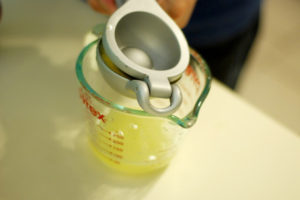

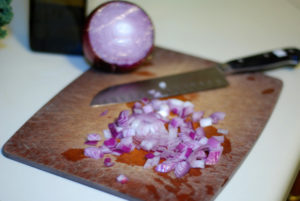

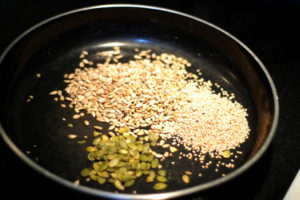


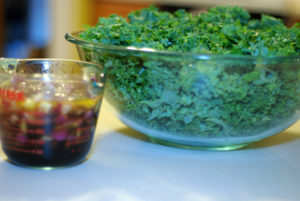
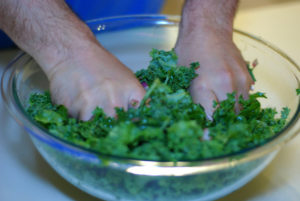
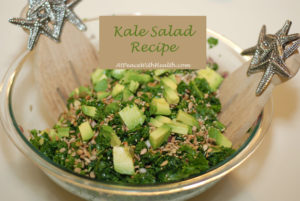


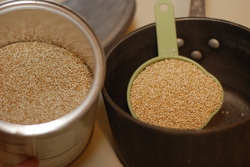
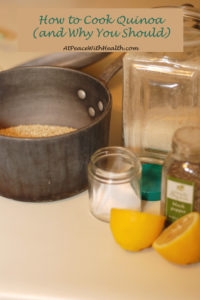


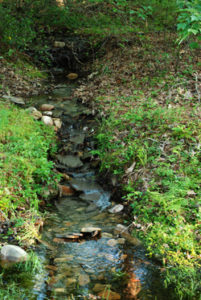 Change asks us to aim for the healing, not the cure, to live for the journey, not the elusive destination. There is a huge difference between healing and cures, journeys and destinations; it is an issue of quality. Taking a journey can be likened to an adventure, one that is filled with mystery and purpose. Change is such a journey.
Change asks us to aim for the healing, not the cure, to live for the journey, not the elusive destination. There is a huge difference between healing and cures, journeys and destinations; it is an issue of quality. Taking a journey can be likened to an adventure, one that is filled with mystery and purpose. Change is such a journey.